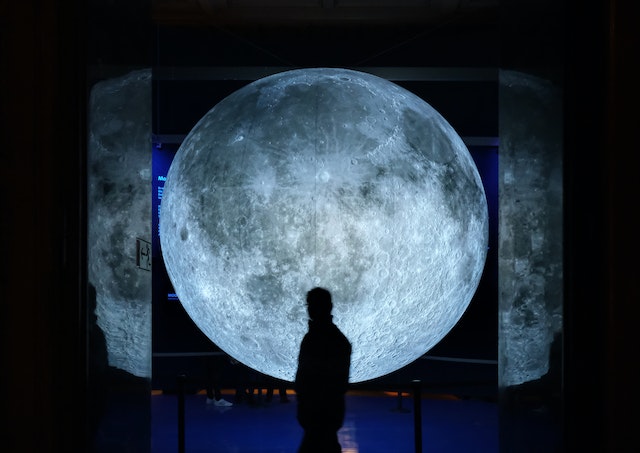The evolution of aviation and aerospace has been a testament to human ingenuity, innovation, and the unrelenting pursuit of new frontiers. From the Wright brothers’ first powered flight in 1903 to Neil Armstrong’s “one small step for man” on the moon in 1969, science has driven this industry forward with remarkable speed. Today we’ll take a closer look at how these incredible advancements have changed not only our modes of transportation but also our understanding of the universe around us. Join us as we explore how science continues to shape this fascinating field!
The Wright brothers and the first powered flight
In the winter of 1903, two brothers from Ohio changed the course of history forever. Wilbur and Orville Wright had spent years tinkering with gliders before finally designing a machine that could take off under its own power. On December 17th, they made their first powered flight at Kitty Hawk, North Carolina.
The flight lasted just twelve seconds and covered only 120 feet but it was a momentous achievement. The brothers had proved that sustained controlled flight was possible using an engine-powered aircraft.
Their invention sparked a worldwide fascination with aviation and set in motion a series of events that would lead to modern air travel as we know it today. Within just twenty years, commercial airlines were flying passengers across continents on regular schedules.
But while their contribution to aviation is undeniable, the Wright Brothers’ impact reaches far beyond our planet’s atmosphere. Their work paved the way for advancements in aerospace technology and ultimately led us to explore space itself.
The jet engine and the birth of commercial aviation
The jet engine revolutionized aviation and marked the birth of commercial air travel. The first successful test flight of a jet-powered aircraft was in 1939, by German engineer Hans von Ohain. However, it wasn’t until after World War II that the technology became widely available for commercial use.
The jet engine allowed planes to fly faster and higher than ever before, making long-distance travel more efficient and convenient. The Boeing 707, introduced in 1958, was the first commercially successful jet airliner and helped popularize air travel as a means of transportation.
The introduction of jets also led to advancements in airport infrastructure such as longer runways and larger terminals to accommodate these faster planes. This ultimately made air travel more accessible to people around the world.
Today, modern aircraft continue to utilize jet engines with ongoing improvements in efficiency, reducing carbon emissions and noise pollution. With this continued innovation in aviation technology, we can expect even greater strides towards sustainable flights and safer travels for all passengers.
Space exploration and the quest for new frontiers
Space exploration represents the next frontier of human development. For years, scientists and researchers have been working tirelessly to push the limits of space travel and uncover new discoveries that can help us better understand our universe.
One of the primary goals of space exploration is to discover whether life exists beyond Earth. Scientists believe that there may be other planets in our galaxy capable of supporting life, and they are eager to explore these possibilities.
Another important aspect of space exploration is the study of celestial bodies such as asteroids, comets, and meteoroids. By studying these objects up close, scientists can gain insight into how they formed and what role they played in shaping our solar system.
Space exploration also plays a critical role in advancing technology here on Earth. Many modern technologies such as GPS systems, satellite communications, and medical imaging were developed through NASA’s research initiatives.
As we continue to explore deeper into space, it’s clear that this field will play an increasingly important role in shaping future advancements for humanity. From discovering new worlds to unlocking groundbreaking technological innovations, there’s no telling where this journey will take us next!
How aviation and aerospace continue to evolve
Aviation and aerospace continue to evolve at a rapid pace, driven by advancements in technology and engineering. The development of new materials and manufacturing techniques has enabled aircraft and spacecraft to become lighter, more efficient, and more reliable.
In recent years, there has been increasing interest in developing electric planes that are powered by batteries instead of traditional jet fuel. This could significantly reduce the carbon footprint of aviation and make air travel more sustainable.
The use of artificial intelligence (AI) is also becoming increasingly prevalent in aviation. AI can be used for tasks such as predicting maintenance needs or optimizing flight paths for maximum fuel efficiency.
Advancements in space exploration have led to plans for missions beyond our own solar system. Private companies like SpaceX have made significant strides towards reusable rockets, while NASA’s Artemis program aims to return humans to the moon by 2024.
It’s clear that aviation and aerospace will continue to evolve as technology advances further. From electric planes to deep space exploration, the possibilities are endless – making this an exciting time for science enthusiasts all around the world!
Conclusion
Aviation and aerospace have come a long way since the Wright brothers’ first powered flight. Science has driven innovation, leading to the creation of faster and more efficient planes, as well as incredible feats such as space exploration.
The development of jet engines brought about commercial travel at an unprecedented scale, making it possible for people to traverse vast distances in record time. The quest for new frontiers then led us beyond our planet’s atmosphere and into outer space.
As aviation and aerospace continue to evolve, we can only imagine what possibilities will unfold next. Perhaps supersonic air travel will become mainstream or maybe we’ll establish colonies on other planets. The future is excitingly uncertain.
What is certain though is that science will lead the way once again, driving progress forward with each new discovery made along the way. It’s an exciting time to be alive – one where anything seems possible if we put our minds to it!









